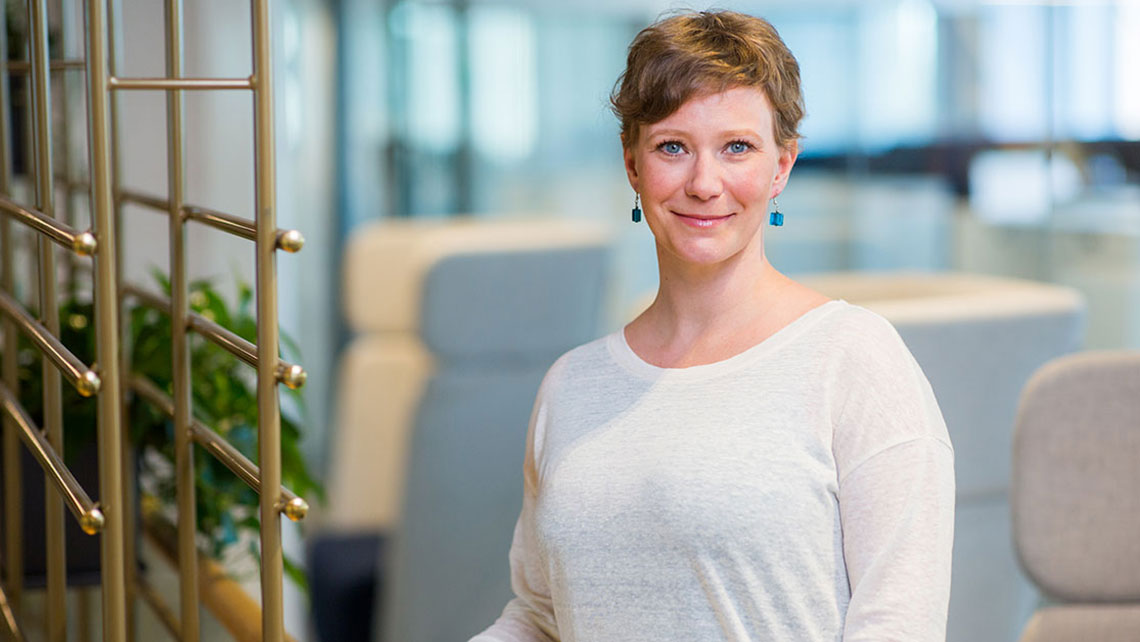“Analytics is all about providing data to help people make the right decisions,” says Elsa. “Typically people don’t have enough information to see the big picture and, as analytics professionals, that’s where we step in. The information we provide helps ensure the safety and quality of products and processes all over the world, ensuring companies are compliant with regulations and their products are of a consistent quality. In short: information is power – and we provide it.”
Finding the needle in the haystack
Analytics has come a long way over the years, from the tasting and smelling of samples to the sophisticated equipment we rely on today. “Not so long ago chromatograms were counted on dotted paper – now we are supported by equipment that gives us time to focus on more challenging questions. One of our challenges is that we’re often looking for and at things that are very small. For example, when we’re demonstrating quality or compliance we’re often looking at the parts per billion (ppb) level. That’s the equivalent of being able to find one particular grain in five truckloads of rice,” Elsa says.
The ability to create and combine information – to put the pieces together – is the essence of our know-how.
“Sometimes our work starts with a deposit analysis – perhaps a customer in the pulp and paper industry has found an oily deposit and wants to know what’s happening and how to stop it. Oily stuff, hard stuff, smelly stuff, sticky stuff – we analyze it all! Through continuous discussion with application specialists we work together to find the cause and the solution. We also do a lot of R&D analytics to support our new product development process, as well as help customers to optimize their processes, reduce chemical quantities, or make sure their new product is in spec. Both R&D and troubleshooting analytics use many of the same skills: the ability to create and combine information – to put the pieces together – is the essence of our know-how,” Elsa describes.
A world without analytics
“Without analytics the world would be a much less pleasant place. Soggy toilet paper, crumpled or smelly food packaging, dirty water coming out of your tap or being discharged into nature – these all show processes that are not under control, and to be able to control them you need analytics,” Elsa explains.
“Without analytics we are blind – how do you know your product isn’t causing problems? And how can you optimize chemical dosages without analyzing their effect? We provide and analyze the data to solve problems and, together with our application specialists, also show where improvements can be made in the future – leading to a safer, happier, and more sustainable planet for us all.”
Complexity and collaboration
“Many people would say that the biggest challenge in analytics is the ever-changing world we live in, with ever-smaller quantities in increasingly complex processes constrained by tightening regulation and the increasing use of recycled materials. But I think that it’s actually knowing the right questions to ask. We work with sophisticated equipment that provides us with a lot of data, but without knowing what to ask you won’t get the right answers to move forward with a problem,” Elsa says.
That’s the best part of my work: knowing we have made a difference.
Getting the right result is surprisingly tricky. “Our role is to ask the right questions and collaborate with all parts of the organization to get answers that – when combined with our analytics expertise – really move our customers forward. I like the fact that the challenges we face are extremely complex and touch every part of Kemira, so we get to work with everyone. And we are part of R&D so we get to be part of cutting-edge development too,” Elsa describes.
“If you have an eye for detail and like puzzle solving and working with people, I thoroughly recommend analytics as a career choice. I get to work with real experts who always go the extra mile for our customers – and as our customers often have a pressing and urgent need for our services, it gives meaning to my work to see them walk away satisfied. That’s the best part of my work, in fact: knowing we have made a difference,” Elsa concludes.

